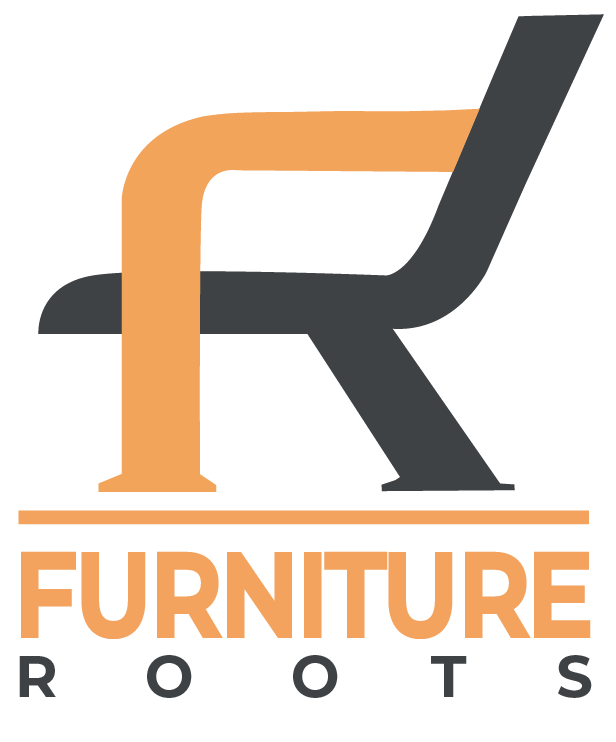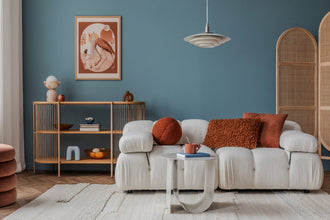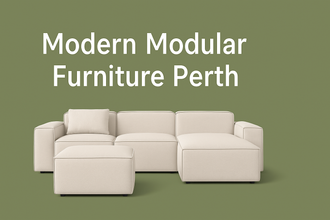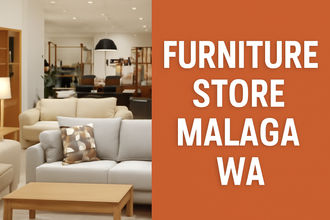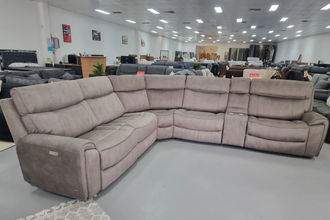
If there’s one thing we’ve noticed lately, it is how quickly life is changing. Homes are getting smaller, rooms are multi-purpose, and flexibility is the new definition of comfort.
More Australians are choosing modular furniture systems because they adapt beautifully to these changes. You can rearrange a modular sofa as per your new apartment space or family needs, without losing style or comfort.
But with this flexibility, question comes up: what about modular sofa durability?
We hear it all the time from our customers at Furniture Roots. People love the versatility and the look, but they’re unsure if modular sofas can stand up to years of daily use. Can the frames handle constant reconfiguration? Or will it give out sooner than traditional sofa?
Hence, we’ve decided to cut you through the confusion with practical insights. Because our years of expertise has taught us well on how to check or maintain modular sofa durability.
How Long Does a Modular Sofa Last?
The most honest answer to this question is: it depends on a lot of factors.
But in well-constructed systems, modular sofas can last 10 to 15 years, and even more with the right materials and care. General sofa lifespans are quoted in the 7–15 years range, and quality modular designs match or even exceed those figures.
Because modular systems let you swap out sections rather than replace the whole unit, you effectively stretch usable life. Because if one module suffers damage or wear, you can replace just that piece, and preserving the rest.
That said, many sofas (modular or not) begin to show wear in critical components long before the full 10–15 years mark, particularly under heavy use. So, that’s why we said, it depends.
Factors That Affect Modular Sofa Durability
Let’s talk about some important modular couch durability factors that adds year to the its lifespan (or subtracts if not chosen well).
1. Frame & Structure: Material Is Critical
The foundation of longevity lies in modular sofa frame materials. The frame is less visible component, but it supports everything, like corners, joins, connectors. If it weakens, the rest of the sofa can’t stay any longer.
Some durable materials for modular sofas include:
|
Material |
Qualities |
|
Solid hardwood (e.g. kiln-dried oak, ash, beech): |
Most durable and stable material, resistant to warping over time. |
|
Engineered wood or layered plywood: |
Acceptable if high-grade, but more prone to delamination under constant stress. |
|
Metal (steel, aluminium): |
Excellent, especially for connector hardware or for modular module shells. |
Cheap frames made of particleboard or low-quality materials fail under regular use. When checking durability, we always suggest corner blocks, internal bracing & durable connectors. As they reduce stress on joins when modules shift or are reconfigured.

2. Cushion Core and Foam Density
Even the best frame won’t compensate for weak cushions. The cushion quality is another major determinant of how comfortable and long-lasting the seating remains.
- Low-density foam sofas begin sagging within a year or two
- High density foam cushions modular sofa (above 30–35 kg/m³ or equivalent) retain shape far longer.
Some sofas combine foam cores with pocketed coil springs overlaid with foam to absorb impact and give bounce. Those hybrid cushions can sustain comfort for 10+ years, in moderate use. Always check foam quality, because modular section cushions tend to be handled more (moved, removed, rotated) and are more prone to damage.

3. Upholstery & Wear Resistance
The outer layer is your constant contact point, so you can’t ignore it either. Modular sofa upholstery wear depends on:
|
Rub count |
Tightly woven performance fabrics resist abrasion and pilling. |
|
Stain resistance or Protectants |
Treated or inherently stain-resistant fabrics perform better in everyday settings |
|
UV and light exposure |
Sunlight accelerates fading and fibre breakdown, especially for cotton or linen blends. |
We recommend performance fabrics or high-end linen to slow wear. They can also survive in busy homes with children or pets.
4. Frequency of Reconfigurations
One big advantage of modular sofas is reconfigurability, but it needs attention too.
Each time you disconnect, move, or reconnect modules, connectors and joints endure stress. Poorly designed connectors can loosen or warp over time. That’s why, number of reconfigurations is a real variable for modular couch durability factors.
We suggest systems where connectors are tough, well-aligned, and designed for repeated coupling and decoupling without twisting or loosening.

5. Quality of Manufacture and Craftsmanship
Remember a sofa can last only as long as its weakest connection.
Subpar stitching, misaligned seams, sloppy joints or poorly reinforced connections lead to early failure. The weakest link tends to fail first. People invest in a strong frame and neglect workmanship, but materials only perform when they’re assembled properly.
In modular sofa quality assessment, we check tight tolerances, secure stitching, smooth join alignment, and a flexible modular design that allows replacement of internal elements.

Victoria Electric Recliner Modular Sofa
Comparing Modular Sofas Versus Traditional Sofas: Quality Differences
At first glance, you think modular is only for design and looks.
But in reality, modular systems are built with stricter tolerances and stronger connectors than fixed ones. Because they must allow movement and flexibility, their design integrates stress-resistive features. E.g. reinforced connectors, bracket systems, and locking mechanisms.
Traditional sofas don’t need this level of articulation, and design durability.
In a traditional sofa, once a section suffers damage, you're forced to reupholster or replace the entire unit. With modular systems, you can replace modules or even components (frame piece, cushion, cover) without discarding the entire sofa. It means modular furniture is more sustainable and cost-efficient in long term use.
Still, if a traditional sofa uses better materials and craftsmanship, it can outperform a poorly made modular. So, always check for quality instead of label.
Modular Sofa Quality Assessment: What to Inspect Before Buying
Before placing your order, there are some important questions you should ask your supplier. So, you can be sure your modular will last for 15 years (or more).
Check for:
|
Frame specs |
Type of wood/metal, thickness, bracing, corner blocks |
|
Connector system |
How modules lock, tolerance, ease of removal without damage |
|
Cushion density |
Request foam density numbers or coil counts |
|
Upholstery durability |
Rub count, stain treatment, UV resistance |
|
Fabric covers |
Are they removable, washable, replaceable? |
|
Warranty & after-sales support |
Look for modular sofa warranty expectations of 5–10 years on the frame, plus coverage for connectors |
|
Ease of replacing parts |
Can modules, covers, or internal parts be replaced without scrapping the sofa? |
This assessment will make sure you’re not just buying a pretty shape. You’re investing in furniture that carries genuine longevity.
How to Extend Modular Sofa Lifespan? Care Tips
An important factor for durability is use and lifestyle, and you can manage the lifespan of your modular sofa through it. Below are actionable modular sofa maintenance tips we share with every customer to help your sofa last long.
- Rotate and flip cushions periodically (every 4–8 weeks) to equalise wear.
- Vacuum seams and corners using upholstery attachments to remove grit that causes abrasion.
- Avoid direct sunlight and use blinds or reposition the sofa away from windows to prevent UV damage.
- Tighten connectors yearly and check module joiners and bolts regularly. They can loosen slightly over time.
- Use sofa covers or throws over arms or high-use zones to shield fabric.
- Spot-clean immediately using recommended cleaners rather than letting stains set.
- Limit children jumping or heavy loads on individual modules and treat with care.
These steps significantly slow down modular sofa deterioration and can push a 10-year lifespan toward 15 years or more.

Signs Modular Sofa Is Wearing Out & Need Replacement
Even the best sofa eventually reveals its age, so you need to be aware of that too. These are some signs that show that it your modular couch has reached its life limit.
- Cushions no longer rebound, and there’s sagging or flattening despite rotation.
- Creaks, squeaks or looseness in the frame or connectors.
- Fabric thinning, fraying, or discolouration beyond repair.
- Connectors failing to lock securely.
- Persistent spills, stains or odours that resist cleaning.
When these signs become consistent, it’s time to consider replacing parts in modular sofa. Maybe you just need new cushion cores, covers, or a faulty module. If you’re unsure, ask from the furniture experts and choose high quality parts for long term value.
Want a modular sofa that fits your space and stands the test of time?
Explore Durable Modular Sofas at Furniture Roots
At Furniture Roots, we believe in furniture that adapts with, and endures your lifestyle. Because we want you to invest once in quality, and enjoy years of comfort, rather than struggle with early replacements.
Our durable modular sofas come with detailed product specs so you can check frame materials, foam densities, upholstery wear ratings, and warranty terms. Let us help you build a modular sofa system that grows, not wears out, over time.
FAQs
How long will modular furniture last?
Good-quality modular furniture lasts 10–15 years, depending on the materials, build quality, and number of configurations. With strong frames, high-density foam cushions, and proper care, modular pieces can even outlast traditional sofas. Plus, being able to replace individual modules helps extend their lifespan.
What is the average lifespan of a sofa?
On average, a well-made sofa lasts 5–15 years.
- Lower cost sofas: 5–7 years
- Mid-range sofas: 8–12 years
- High-quality sofas: 15+ years
Regular cleaning and cushion rotation can help extend the lifespan significantly.
What type of sofa lasts the longest?
Sofas with solid hardwood frames, high-resilience foam cushions, and durable upholstery fabrics like leather or performance synthetics last the longest. They resist sagging, tearing, and fading, and give you years of dependable comfort.
Which interior furniture is better, modular or regular?
It depends on your lifestyle. Modular furniture is perfect if you love flexibility and rearranging your space. Regular furniture suits those who prefer classic designs and minimal upkeep. Both can be long-lasting, if quality craftsmanship and durable materials are there.
